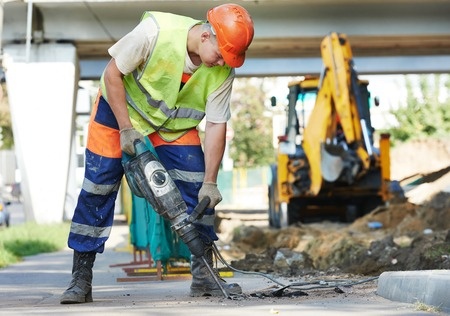The Occupational Health and Safety Act of 2004 and the Occupational Health and Safety Regulations of 2007 lays down measures and procedures to be used while removing asbestos either in residential or commercial sites. The word workplace in this sense can be used to denote all sites where asbestos or asbestos containing material (ACM) has been within either large or small quantities.

Samples of Asbestos Containing Material and areas that will likely contain asbestos are:
Asbestos cement water pipes, asbestos cement sheets, boiler insulation, floor vinyl tiles, the lining of switchboards, flexible hoses and fire door insulation.
1. Non-Licensed Removalists
Removal work can be achieved by self-employed individuals, though only on a limited area.
2. Licensed Removalists
Class A
A holder with this license can remove both forms of asbestos (friable and non-friable) on areas above 10 square meters.
Class B
A holder with this license can remove only as much as 10 square meters of friable and non-friable asbestos or ACM.
3. Removal Plan
Here is the framework that guides most of the activities to take place. It covers the full time span, an in depth job description plus tools needed, a budget sometimes, and the safety precautions to be put in place.
4. Atmospheric Monitoring
That is mandatory, to observe any asbestos fibers that could be released into the air after removal of friable asbestos. After cleaning, the percentage remaining in the air should really be at most, 0.01 fibers per milliliter. An extensive report is prepared for the same and kept for referral later.
5. Other Safety Precautions
Personal and general protective equipment should be in position and in excellent working conditions. A backup of each item, where possible, should be on standby in the event of any failures. A report of the incident of failure must be done and submitted within 24 hours to authorities like WorkSafe Australia. Enclose the job area in thick and brand-new plastic sheeting.
6. Handling Of Waste
Waste material needs to be discarded in thick polythene bags, which should be sealed with duct tape and labelled properly as asbestos waste, complete with a legible warning. The waste containers need to be emptied soon after the removal and kept far from places where untrained people will come into contact with it.

7. Inspection Of Material
There could be material at the site that'll need to be re used afterward, these must be professionally inspected to confirm that o asbestos dust settled on them
The above guidelines are but a hint of the iceberg. Get yourself a copy of the relevant statutes from the database of the Australian government if you should be a removalist, independent or part of a corporation and get everything in line with the law.
Most importantly, this article safety measures need to be taken as strictly and as meticulously that you can because inhaling or swallowing asbestos fibers may cause mesothelioma, asbestosis and lung cancer. There are several compliance codes manufactured by numerous corporations, and might not be in accordance with the Occupational Health and Safety Act, under which an offence may be prosecuted. It is important to test the relevant Ministry's database to see which codes are approved or utilize the statute directly as a guide.

The Wall